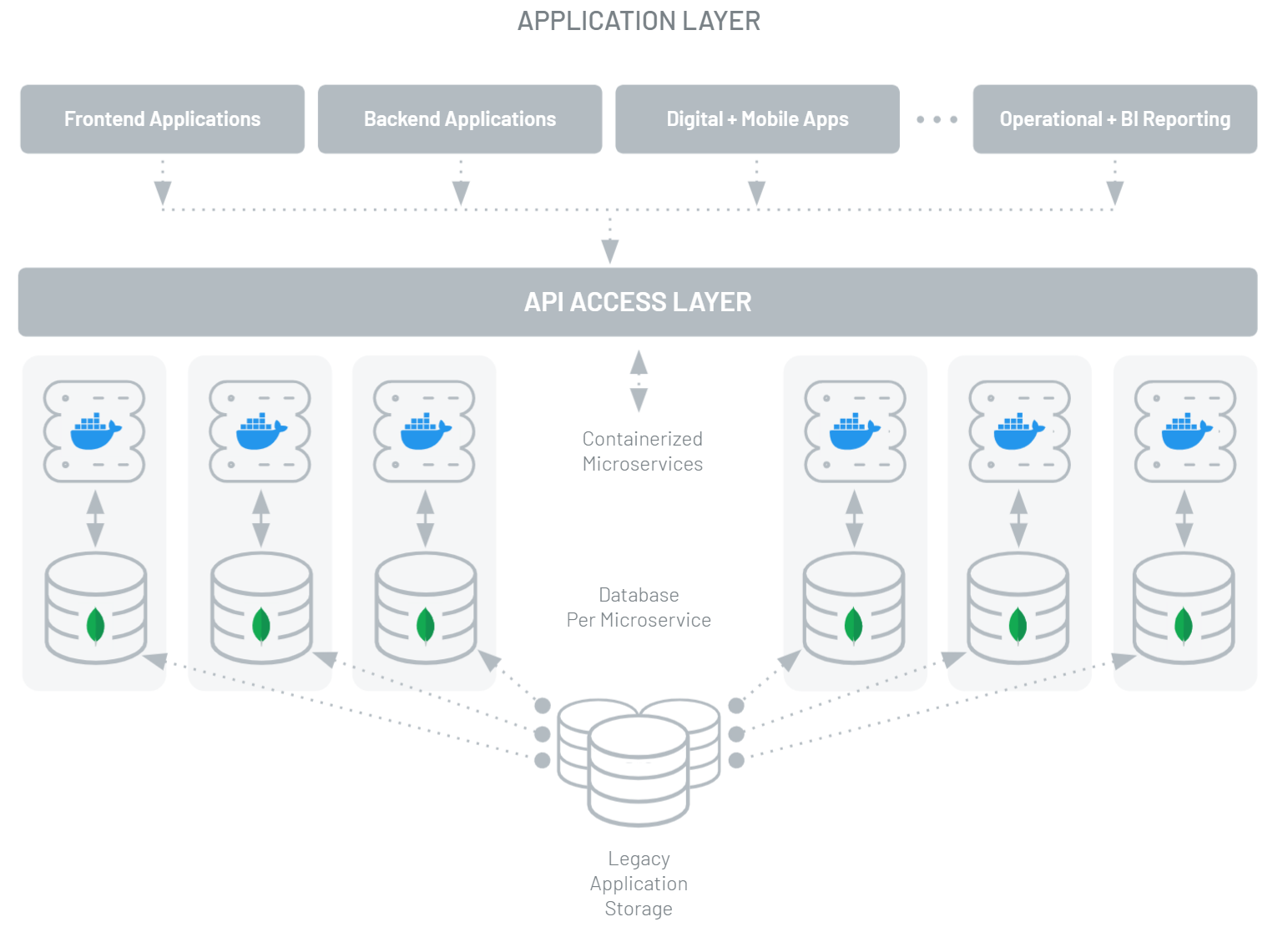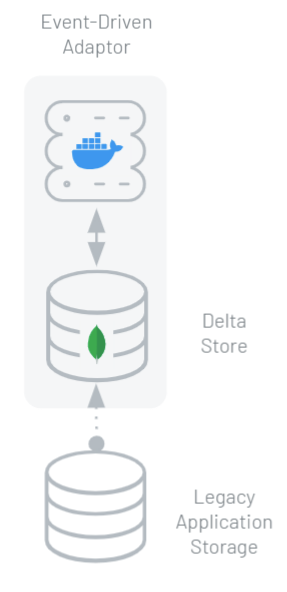Application Modernization with gravity9 And MongoDB Atlas: How Digital Decoupling Supports the Customer Offering
The goal of most organizations is pretty clear: to improve customer offerings and become more operationally efficient, streamlined and profitable. But is it possible for organizations to excel in an agile fashion when they are reliant upon legacy systems? It’s the age-old dilemma between risk and innovation. How can you mitigate the former while accelerating the latter?
Nearly all organizations operate with some type of legacy system in place that, often, is central to the operation of the business or the customer offering—i.e., one that would be highly costly and disruptive to move away from. To solve this predicament, the process of digital decoupling enables organizations to detach incrementally from legacy systems while acknowledging the critical role they often play.
In this blog, we’ll further explore the value of digital decoupling as well as introduce how gravity9 with MongoDB Atlas delivers the smoothest transition possible.
Why Not Simply Upgrade?
Digital decoupling is not a “big-bang” upgrade where one system is fully replaced by another overnight; rather, it allows for the continued existence of your legacy system as part of your digital architecture while simultaneously unlocking innovation. But why not simply upgrade? Isn’t “out with the old and in with the new” the faster route to take? Not always. When a big-bang upgrade focuses on the replacement of a legacy system that is central to a customer offering or business operations, it becomes a much more complex, risky, and time-intensive undertaking. Often, many months or years can pass before any value is delivered to customers. But while your organization is focusing time and effort on a long-term, large-scale system replacement initiative, your customers’ needs will be changing and your competitors will be continuing to innovate. Once your new system is finally ready to be deployed to the marketplace, there’s a good chance it may already be rendered obsolete.
Digital decoupling offers a faster, less risky, and more flexible alternative. The legacy system is maintained as the core of your business, but strategic portions are exposed through modern microservices to allow for the rapid creation of new digital products and offerings. The organization can utilize new, modern technologies to maintain the functionality of the legacy system while building a more advanced, digital architecture around it. By maintaining the existing legacy system, the organization significantly reduces disruption and risk while unlocking the ability to innovate new products on a rapid timescale.
How it Works
Applying a digital decoupling approach makes quickly innovating new digital products and services on top of your data possible by way of microservices and an event-driven architecture.

By utilizing event-driven architecture, individual systems and capabilities can be built as fully scalable microservices each with their own database, allowing solutions to be built around each microservice that can be combined to provide limitless additional capabilities and services for customers in a rapid and agile fashion. Digital decoupling creates a customer experience delivered via a modern, feature-rich UI or website that is intuitive, user friendly and continuously evolving, while the legacy system still operates behind the scenes.
After years of working with large organizations, the solutions architects at gravity9 have a deep understanding of event-driven architecture as a solution to digital decoupling.
Our adherence to domain-driven design is in our DNA, it is how we build solutions and is core to the way we work….We build event-driven microservices on top of monolithic legacy architecture.
Noel Ady, gravity9 Founding Partner.

By utilizing domain-driven design, system actions are communicated or triggered by way of an event, with colloquialized messages sent between the legacy application and the new architecture via a bus. An adaptor is created to sit in front of the legacy system and speak to your “new IT” in the language of events. This adaptor looks at the data in your legacy system and raises events when changes occur, then optionally writes back changes raised by other systems, allowing your legacy system to participate in the event-driven architecture. The use of APIs ensures the traffic is two-way and non-intrusive to the legacy application so that it can continue to operate as expected.
One of the key technology concerns related to adaptors for legacy systems is the concept of a “delta store.” Events in an event-driven architecture should contain the context for the event, often including the previous value, to help receiving systems properly respond to the event. In more modern systems it’s possible to get this data from webhooks or similar alternatives, but these mechanisms won’t exist in older legacy systems so a different approach via a delta store is needed.
A delta store will contain the history of changes on a value (the ‘deltas’) to allow the adaptor to properly construct the event context and to ensure that events are only raised for true changes in values.
Why MongoDB?
MongoDB’s flexible data schema makes it an excellent implementation technology for a delta store, allowing a dynamic mechanism that can flex to new data and event types on demand. gravity9 partners with MongoDB Atlas, MongoDB’s multi-cloud, secure and flexible database service, as an integral technology enabler of digital decoupling to increase flexibility of the resulting architecture. Importantly, Atlas also enhances reliability for mission-critical production databases with continuous backups and point-in-time recovery. It’s secure for sensitive data and automates key processes like infrastructure provisioning, setup and deployment so teams can access the database resources they need, when they need them. Best of all, MongoDB’s features and benefits help free up developer time so they can focus their talent on more innovative tasks.
What Should I do Next?
The logic is just as important as the physical in digital decoupling when it comes to modelling your events. Utilizing best-practice, domain-driven design alongside a proven approach is the key to success. Together, gravity9 and MongoDB have replicated this success time and time again, enabling organizations to lay the foundations for newer more modern architecture without the disruption of removing their legacy systems.
Interested in learning more about MongoDB’s Modernization Program? Contact us today!